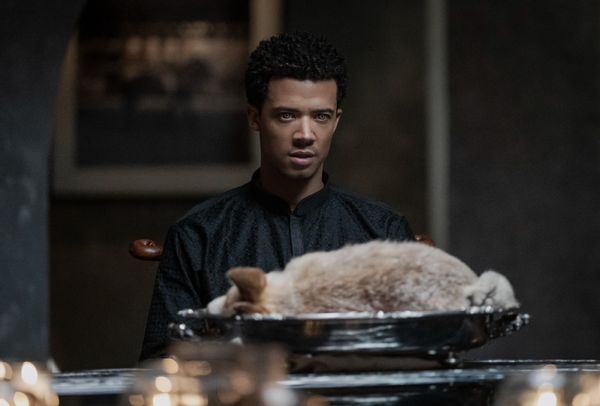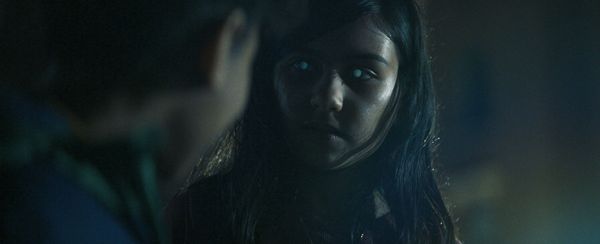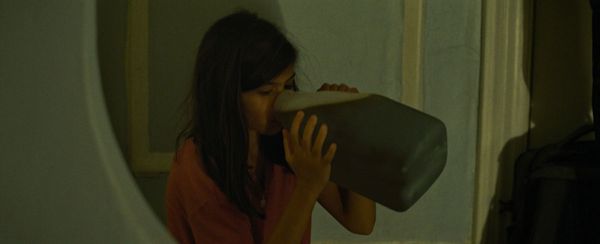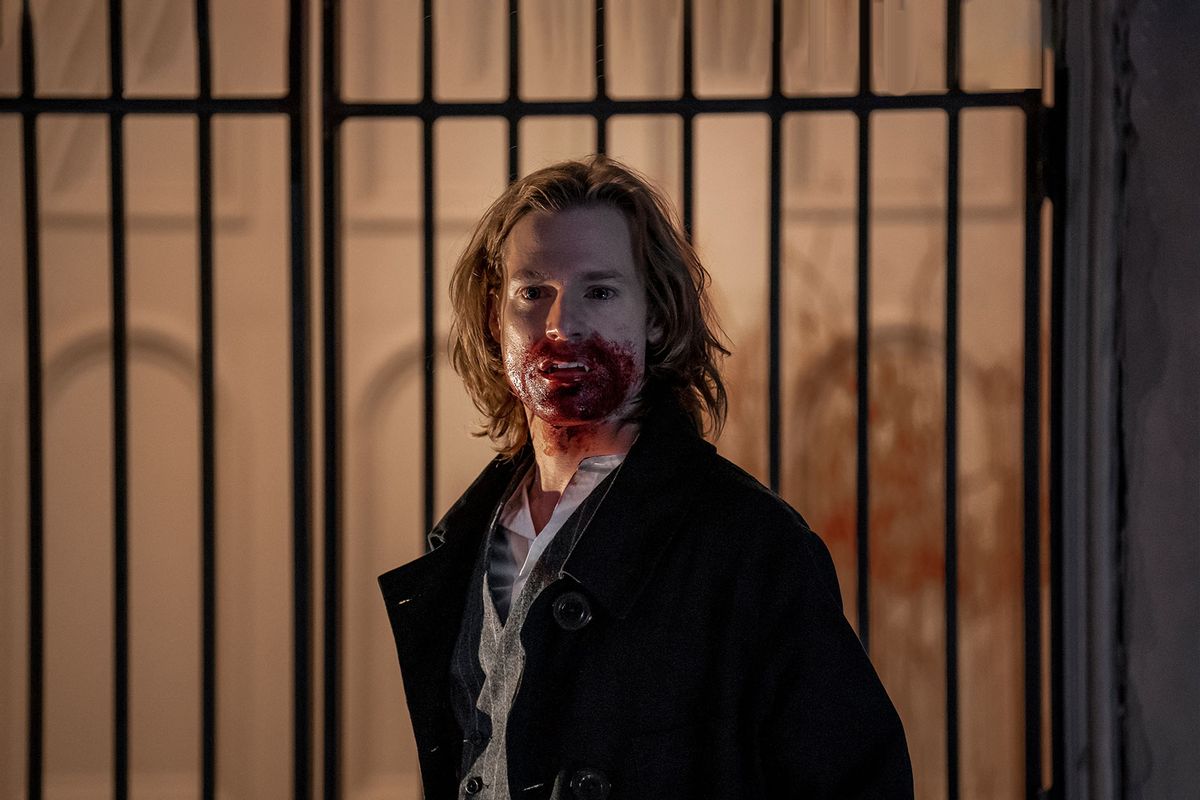Economic experts can't decide whether we're in a recession. We're not there yet, although a recent CNBC survey of economists and other experts posits there's a 52% chance that the U.S. could enter into recession over the next 12 months. Another headline, this one from NPR, blares, "It's almost impossible to find a CEO who isn't bracing for a recession."
But if you can't bring yourself to believe Wall Street's soothsayers, consider reading the tea leaves of your TV schedule. The zombie wave that lasted more than a decade is receding at long last, with vampires ruling once again.
"Vampire Academy," "First Kill" and the animated series "Vampire in the Garden" already debuted, with three new fang fictions joining them this month: Showtime's pensive adaptation of "Let the Right One In," AMC's lush update of "Anne Rice's Interview with the Vampire," and Syfy's quirky "Reginald the Vampire."
Such a surfeit of elegant coffin surfers may be good news for the goth crowd. For our economy, maybe not so much: a longstanding pop culture theory correlates recessions with vampires returning to the limelight.
Consider the similarities between some of the world's richest men, and the 2022 version of Louis de Pointe du Lac (Jacob Anderson), an astronomically wealthy vampire who transforms an entire floor of a Dubai skyscraper into a crypt. Servants attend to his needs and that of his biographer, journalist Daniel Molloy (Eric Bogosian), and other humans allow Louis to drink their blood fresh from the vein.
We never glimpse the underclass toiling on the streets below and beneath hammering sunrays that would turn Louis to ash, but we know they're down there. So does our vampire. Fortunately for him his wealth and the intentionally designed darkness of his architectural jewel insulate him from that rabble.
Louis is quite literally above it all, draining the life from Earth's creatures similar to hungry corporate profiteers waiting to swoop in and suck the marrow of the financially stricken.
 Jacob Anderson as Louis De Point Du Lac - Interview with the Vampire _ Season 1, Episode 2 (Alfonso Bresciani/AMC)
Jacob Anderson as Louis De Point Du Lac - Interview with the Vampire _ Season 1, Episode 2 (Alfonso Bresciani/AMC)
"Vampires are killers," he tells Danny over a multicourse dinner after he's drained a fox-like creature. "Apex predators whose all-seeing eyes were meant to give them detachment, the ability to see human life in its entirety, not with any mawkish sorrow, but with the thrilling satisfaction of being the end of that life. Having a hand in the divine plan."
He goes on to explain to Danny, "Our book must be a warning as much as anything."
Anxiety over a looming recession isn't the stated reason "Interview with a Vampire" is making its TV debut right now alongside "Let the Right One In" or "Reginald the Vampire," all shows based on popular book series, two of which have previously been realized as theatrical releases.
The same can be said of "The Twilight Saga" and "True Blood," both of which made their movie theater and small screens debuts in 2008.
The current vampire resurgence is not some mystical omen but, rather, a reflection of our national mood.
However, they follow a loose pattern that popular culture theorists have tracked since at least the second half of the aughts. A 2019 essay by s.e. smith extensively tracks the rise of the vampire in times of economic stress before the arrival of "Dracula," but here's a short list of recent, famous titles that fit this phenomenon: Charlaine Harris' Sookie Stackhouse novels, the source material for "True Blood," and Stephanie Meyers' "Twilight" novels all published in the years leading up to The Great Recession, with the "Twilight" movies and "True Blood" finding audiences in the thick of it.
 Madison Taylor Baez as Eleanor Kane in Let The Right One In, "Anything for Blood" (Courtesy of SHOWTIME)
Madison Taylor Baez as Eleanor Kane in Let The Right One In, "Anything for Blood" (Courtesy of SHOWTIME)
A similar coincidence exists with the summertime debut of "The Lost Boys" in 1987 months before Black Monday dealt a wallop to Wall Street in October. And Rice's vampire novels were originally published in the 1970s during a shaky economy. The 1994 adaptation of "Interview with the Vampire" that starred Tom Cruise and Brad Pitt arrived in the same year as the worldwide crisis known as the Great Bond Massacre.
Again, this doesn't make the current vampire resurgence some mystical omen but, rather, a reflection of our national mood. The 1987 crash didn't materialize out of the ether any more than the Great Recession did. Every economic crisis takes years to ripen, and the average person may not be able to read the signs of when the plunge is coming or how long it will last. But we can sense the nervousness leading up to it through rising prices at the gas pump and the grocery store. Austerity brings out our fear of fangs.
Zombies... are stand-ins for the exploited masses.
There are few more efficient ways to unleash the demons, madmen, and ghosts hidden in the darkest crevices of the human psyche than to inject anxiety into our imaginations. And among the most familiar figures to relate to in the monster pantheon are, yes, vampires and zombies. That's why these two incarnations of the undead regularly cycle in and out of fashion – they're handy metaphors.
Zombies, formerly sentient individuals doomed to mindlessly serve a hunger that can never be fully satiated, are typically interpreted as stand-ins for the exploited masses. George Romero's 1978 classic "Dawn of the Dead" concretely linked the idea of undead hordes with unchecked consumerism by setting the action inside a mall. Since then they've served as parables for rampant groupthink and, more recently, the pandemic. Indeed, AMC's long-running horror hit "The Walking Dead" saw its ratings plummet during the pandemic. Its final episode are airing while "Interview with a Vampire" is being introduced.
From what the ratings show, it's safe to say we're ready to trade the bloody apocalypse for gleaming fangs and velvet luxury. Vampires also represent exclusivity, the good (after)life enjoyed by former humans deemed worthy of immortality, as Sam Reid's Lestat de Lioncourt decided of Louis.
 Jacob Anderson as Louis De Point Du Lac and Sam Reid as Lestat De Lioncourt in "Interview with the Vampire" (Alfonso Bresciani/AMC)
Jacob Anderson as Louis De Point Du Lac and Sam Reid as Lestat De Lioncourt in "Interview with the Vampire" (Alfonso Bresciani/AMC)
Lestat represents the most successful of them – let's call them the one percent. They're the elegant figures who live hundreds of years and amass generational wealth beyond measure. They also tend to have extravagant, libertine tastes in fashion and entertainment, the pleasures we fantasize about and forgo when budgets are strained.
And yet, we should be leery of being seduced by bloodsuckers actual and figurative since they can hide among us. Louis tells Danny that vampires wait for opportunities to feast on humanity at its weakest, such as global pandemics and "the unraveling of geopolitical foundations."
Want a daily wrap-up of all the news and commentary Salon has to offer? Subscribe to our morning newsletter, Crash Course.
There are other factors in play that make this vampire wave serve a different purpose than others (as well as outliers such as "What We Do in the Shadows," which would soar regardless of the era in which it premiered).
Madison Taylor Baez's Eleanor, the child vampire at the heart of "Let the Right One In," is hinted to be collateral damage in some yet-to-be-revealed plot related to a Sackler-like millionaire who played with forces he should have. Eleanor and her protective father aren't rich – they're desperate. In their story blood isn't power but a trap, an addiction she yearns to be free of.
 Madison Taylor Baez as Eleanor Kane in Let The Right One In, "Anything for Blood" (Courtesy of SHOWTIME)"Reginald the Vampire," on the other hand, makes Jacob Batalon's title character a wish-fulfillment figure: people around him call out the fact that he's fat, and his maker Maurice (Mandela Van Peebles) warns him that the rest of the vampire will shun him because he doesn't fit their image of perfection.
Madison Taylor Baez as Eleanor Kane in Let The Right One In, "Anything for Blood" (Courtesy of SHOWTIME)"Reginald the Vampire," on the other hand, makes Jacob Batalon's title character a wish-fulfillment figure: people around him call out the fact that he's fat, and his maker Maurice (Mandela Van Peebles) warns him that the rest of the vampire will shun him because he doesn't fit their image of perfection.
Each of these shows features vampires who are brown and Black, outsiders before they received what Lestat called "the dark gift," or a curse.
"Interview" leans into this with force, proving how useless Louis' superhuman powers are in the face of institutional bigotry, especially the version that plays out in early 1900s New Orleans. But this also keeps Louis connected to his humanity and, therefore, relatable. That's good, because if the sun is about to set on our economy, we'll appreciate the cold, cool comfort that his extraordinary adventures offer.
Read more
about vampires



Shares